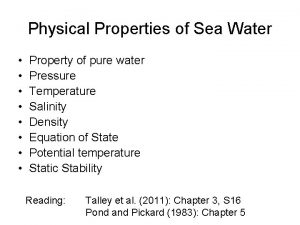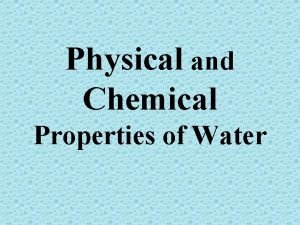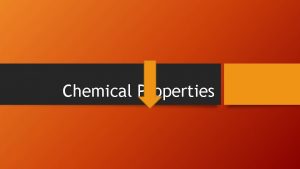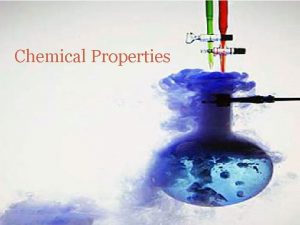15 2 Sea water Chemical Properties of Sea








- Slides: 8

15 – 2 Sea water

Chemical Properties of Sea Water • Sea water is 96. 5% water, 3. 5% salts • Salinity: – – – Measures the amount of dissolved salts in sea water Expressed in ppt (parts per thousand) 35 ppt = 3. 5% Most abundant salt in the ocean is sodium chloride (Na. Cl) Others include magnesium sulfate (Mg. SO 4) and Calcium Chloride (Ca. Cl 2)

Salinity Variations • Actual salinities vary from place to place • Regions of high evaporation have greater salinity – 37 -38 ppt • Regions of low evaporation have lower salinity – 32 -33 ppt

Salinity Sources • Salinity not much different then years ago • Evaporation leaves salt behind • Calcium shells of marine organisms dissolve • Weathering of rocks produces salinity

Removal of Salts • Small salty spray droplets from breaking waves are • picked up by wind and deposited on land Marine organisms remove the ions to make their shells

Physical Properties of Sea Water • Denser than fresh water – Salt ions heavier than water molecules • Freezing point is lower – Salt lowers Freezing point (about -2 o. C)

Physical Properties • Water Absorbs light: – Water is clear but gets dark going down • Which color travels furthest? – Light only penetrates water in first 100 m down • Photosynthesis only good at top •

Ocean Layering • Surface Temps. -2 o. C – 30 o. C • Layers due to density difference • Temps decrease with depths – Surface (0 -100 m ) relatively warm – Thermocline: rapid decrease in Temp. – Bottom Cold Temps near freezing (4 o. C)















